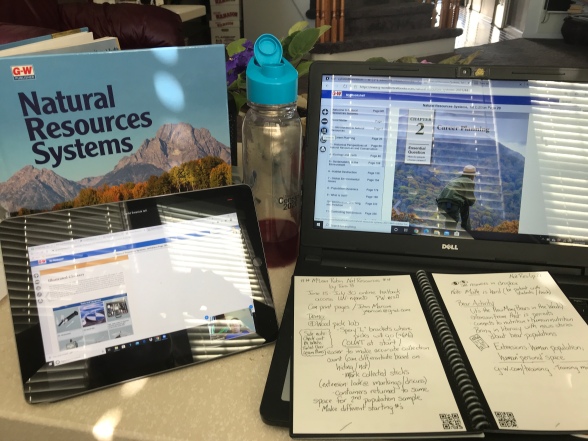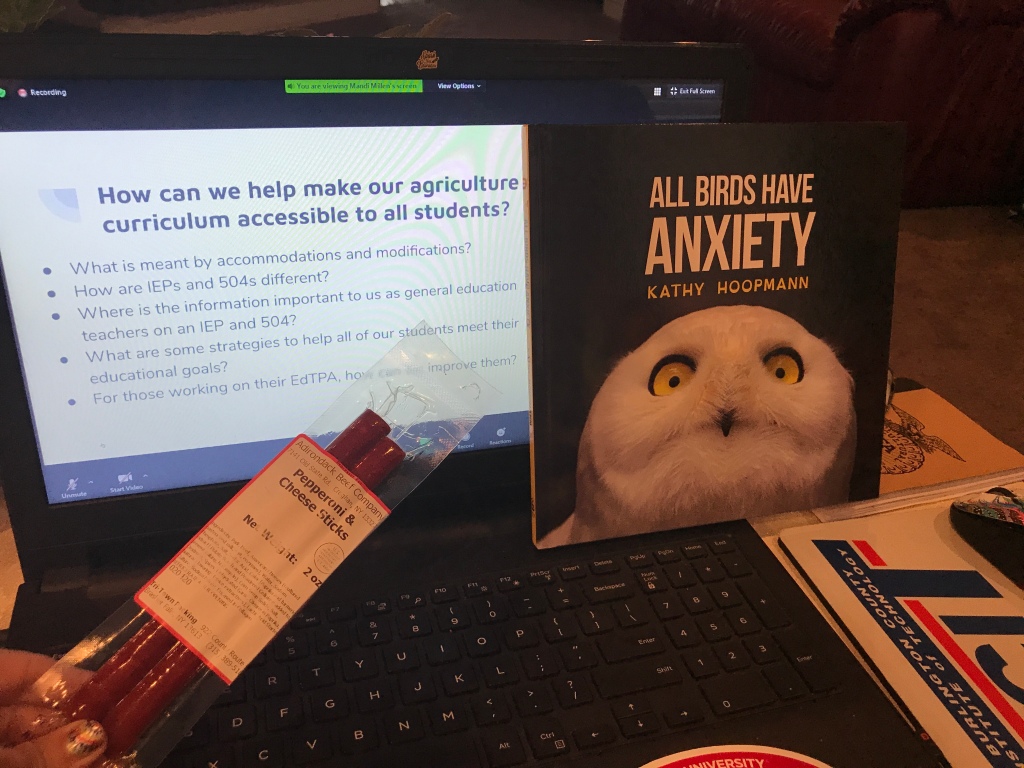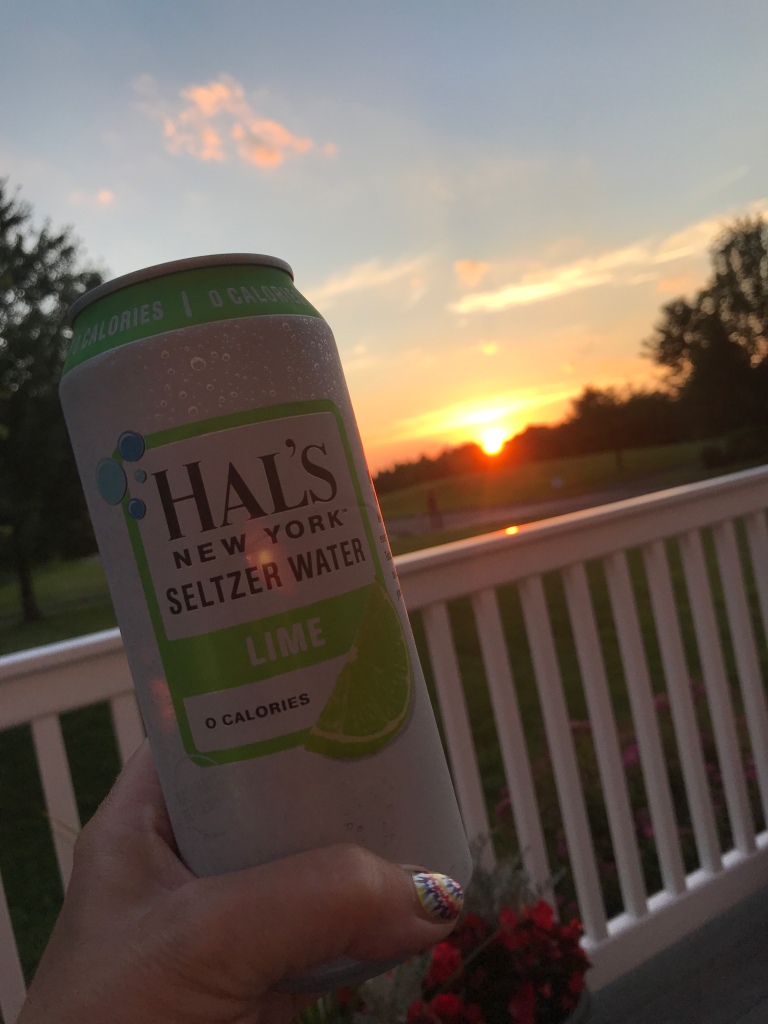I try to be a problem solver and recently, I thought about how we could best support learners at home and address to a small degree some of the inequities that might exist. Part of the solution could come from some school in a box thinking to help us think outside the box of traditional education. Sure, there will be kinks and logistics to consider, but let’s think of it as opportunity.
Materials delivered in a box to connect to an experience are not a new concept. Several years ago I attended a Global Learning in Agriculture Conference and opted for the Conference in a Box experience. (This conference is part of the Global Teach Ag Initiative.) Obviously this is a different model than a school setting as I paid for the conference, partners were used to supplement funding, I believe some grants were obtained, and the materials inside were a combination of learning materials for enhancing the conference experience as well as conference perks and “treats.” The concept of being remotely at a conference while having a tangible experience was one I enjoyed.

This summer, professional development as I am used to was thrown a curve ball. I was no longer traveling places and engaging face-to-face in experiences to hone my craft and network with others. (Why yes, teachers do work in the summer!) In June, I participated in the New York Association of Agricultural Educators Summer Leadership Conference and opted for the conference in a box component. Again, my registration and outside funding sources helped NYAAE create the packages they provided. There were snacks and fun components but there were also tools to help me engage in the conference and materials to help me continue my learning and connecting post event.

Next week, I will participate in a week of professional development offered by Nutrients for Life. There was a minimal registration fee to help offset the cost of shipping the materials we will need. Although I haven’t fully explored the contents, I know it includes a notebook and pen, activity cards, posters, a soil science workbook, a manila folder full of materials and what appears to be Ziploc bags sorted out with activities we will be doing. Some of the bag contents include paper plates, string, plastic cups, possibly rock wool, and other materials I haven’t opened yet. From an equity standpoint, it makes sure that I have what I need to be an active participant in the learning.
Now, let’s transfer this concept to the secondary school setting. I acknowledge that it is not feasible that a student get all the resources they might for a science lab or a career and technical education course. Imagine though if we could create learning experiences in a box for them!
This spring when we transitioned to crisis-emergency remote learning, as the weeks rolled on, I found myself surveying students about materials they had and then mailing Ziploc bags and seeds to students who couldn’t access them for a lab. I was finding alternatives for a soil lab for students who didn’t have access to an empty jar where they were staying. If we had learning in a box, we wouldn’t have to try to figure out what students had, if they could conduct an activity, and then scramble for alternatives. We’d know what resources they were getting.
What would go in the box? Some of the materials I envision are a school agenda book. Many students struggled with time management and having a tool to look at and record in, coupled with modeling of its use by teachers, could help develop this skill. If there are workbooks, lab manuals, or textbooks, they go in the box, too. Some looseleaf paper and a writing tool wouldn’t hurt either. Maybe math classes need rulers or protractors. We don’t need to go heavy expense here. Cardstock copies could meet the need and ensure all students were equipped. For my agricultural science class, I picture resources including magnifying glasses, seeds, ag career cards, small cups, baggies, soil, and a pothos plant cutting wrapped in a moist paper towel in a baggie. Those of course are just starting ideas.
How would they get assembled? That logistic gets a little more challenging. If we consider a model where teachers are allowed in the building, working distanced from each other, this becomes a process that happens in the first few weeks of school. Labels are printed with each students’ grade and course, then get distributed to the appropriate teacher. A bag (paper, plastic, etc.) is provided for the teacher that they put the materials in and then label with the label provided. Assembled class kits are then delivered to the School in a Box assembly area where non-teaching staff and teachers that don’t plan to assemble class kits are preparing them for students.
Some of you might be reading that and thinking, WAIT, I don’t have time to do that. This summer, one of the biggest aspects I’ve learned about in the variety of trainings I have attended (Yup, there goes the teacher working in the summer at her cost and her time to create better experiences for her students again.) is the value of making connections and building relationships with students early on in the school year. If we are remote learning, the first two weeks should focus on activities to help develop those connections. The foresight of school leadership can create modified schedules for the first few weeks of the school year that allow for time to connect with students online and craft the course kits. (Of course, logistics of purchase orders, shipping, and those aspects could put a whole other kink in the system.) Therefore, no teacher is coming in before school starts.
How will students get their School in a Box? Just as end of year pick up of the “stuff” left behind when the buildings abruptly closed were scheduled and facilitated, the same process could be conducted for pick up. Or better yet, give bus drivers the opportunity for employment, albeit brief, and have the boxes delivered. This also assists parents who might have to work during the day or don’t have reliable transportation.
Yes, there’s flaws. I’m not saying I have fully thought this out. I know there are several kinks to this concept -materials not arriving on time to pack, student schedules changing, having to intentionally plan the first few weeks of school to accommodate this, and many other challenges I haven’t seen. However, the idea gives us a starting point. It provides a way to support student learning at home in a planned out manner instead of crisis management manner.
It’s a start. This is my way of planting a seed in your brain of what intentional remote instruction and learning could look like. It’s me putting in the reader’s subconscious the thought of “What would my class kit have if I had to pack it the second week of school?” It’s me challenging you to think “How can we better reach all our learners?”








